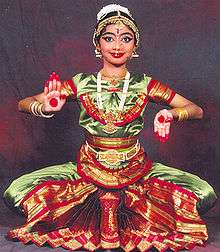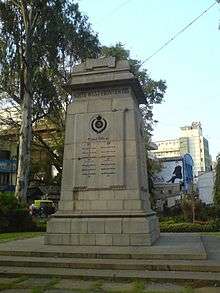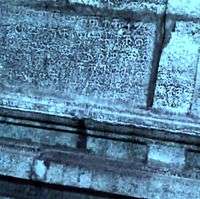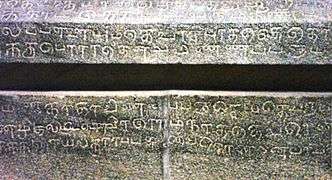Karnataka Tamils

The Karnataka Tamils are a social community of Tamil language speakers living in Bangalore, capital city of the Indian state of Karnataka. According to The Hindu newspaper, Tamil-speaking settlers migrated to Bangalore in three major waves, the first after the 10th century, when the Cholas of Tamil Nadu captured the city; the second during the Vijayanagara period, and the third, in the 18th century, after the need for militia increased for the Mysore rulers, Nawabs of Arcot, and the British East India Company
History
According to Srinivas, at the end of the tenth century, the Cholas from Tamil Nadu began to penetrate in areas east of Bangalore; it later began to extend its control over parts of present-day Bangalore, such as Domlur on the eastern side of the city. Around 1004, during the reign of Rajendra Chola I, the Cholas defeated the Western Gangas, and captured Bangalore. In the 19th century, Bangalore essentially became a twin city, with the "pētē", whose residents were predominantly Kannadigas, and the "cantonment" created by the British, whose residents were predominantly Tamils.[1]
Communities
Hebbar Iyengar
Hebbar Iyengars were formerly an endogamous group and constitute a part of the Iyengar sub-caste of the Karnataka Brahmins. They are traditionally followers of Ramanuja and Vedanta Desika. They hail primarily from Hassan, Mysore, Tumkur, Bangalore, and surrounding areas in southern Karnataka. The characteristic dialect of the Hebbar Iyengars is called Hebbar Tamil and is a mixture of Iyengar Tamil, Kannada and Sanskrit. The group's primary mother tongue is Hebbar Tamil which is spoken in most Hebbar Iyengar households, though Kannada and English are increasingly taking its place. A peculiar characteristic of Iyengar Tamil (including Hebbar Tamil) is its retention of divine or holy food terminology. For example, Iyengar Tamil makes distinctions between potable ([t̪iːrt̪o]) and non-potable water ([d͡ʒʌlo]), the former considered sacred but both borrowed from Sanskrit. Standard Tamil exhibits only the generic term for 'water'. The Vaishnavite Brahmins of Southern Karnataka use the Tamil surname "Iyengar" and are believed to have migrated during the time of the 11th century Vaishnavite saint Ramanujacharya. Most Iyengars in Karnataka use sub-dialects of Iyengar Tamil.
Thigala
The Thigala or Tigala are a Tamil social group found in Tamil Nadu and Karnataka states of India, and particularly the city of Bangalore.[2] They are likely a sub-caste of the numerous Vanniar caste.[2] Every year, the Thigalas celebrate a festival called Karaga. The story of the Karaga is also rooted in the Mahabharata. Draupadi is the community deity of the Vanhikula KshytriyasThe Thigala in Karnataka speak a mixture of Kannada and Tamil[2]
Thigala and Bengaluru Karaga
Bengaluru Karaga is primarily a well-known tradition of Thigala community in southern Karnataka. The Karaga festival is generally led by the men of the community. There is a legend which gives them this privilege. Thigalas believe that in the last part of the Mahabharatha, when the Pandavas were shown a glimpse of hell, one last Asura (Demon) called Tripurasura was still alive.[3] At this time, Draupadi, the Pandava's wife, took the form of Shakthi devi. She created a huge army of soldiers called the Veerakumaras. After defeating the Asura, the soldiers asked Shakthi Devi to stay back with them. Though she had to go back, she promised them that she would come to stay with them every year during the first full moon of the first month of the Hindu calendar[3] Kempe Gowda built the Bangalore fort and the town in 1537 A D. And moved his capital from Yelahanka to the new Bangalore. .[4]
Demographics
In the Bangalore Central Lok Sabha constituency there are about 5.5 lakh Tamil voters out the total 14 lakh voters, and Tamilans play a key role in deciding the winning candidate.[5][6][7] According to Indian Express news, out of 1.67 lakh voters in Shivajinagar, 92,000 are Tamil speaking people.[8] Tamils form 3.46% of the total population of the state.[9] Almost 5 million Tamils live outside Tamil Nadu, inside India. There has been a recorded presence of Tamil-speaking people in Southern Karnataka since the 10th century.[10]
Suburbs of the Bangalore Cantonment (Fraser Town, Murphy Town, Shivajinagar, Halasuru, Benson Town, Austin Town, Richards Town, Cox Town, Richmond Town, Neelasandra and Viveknagar) have a large Tamil population. They trace their ancestry to the large number of Tamil speaking soldiers, suppliers and workers who were brought into the Bangalore Civil and Military Station, by the British Army, after the fall of Tippu Sultan. The Bangalore Cantonment was directly under the administration of the British Madras Presidency till 1949, when it was handed over to the Mysore State.[11][12][13][14][15][16] Significant Tamil-speaking populations are also found in areas of Bangalore not part of the Cantonment such as Chamarajpet, Kalasipalya, Sriramapura, Malleswaram and Vyalikaval as well as the eastern and south-eastern localities of Bangalore which are in proximity to the IT Corridor (Whitefield, Electronics City and the Outer Ring Road) such as Indiranagar, Banaswadi, Koramangala, BTM Layout, HSR Layout and Marathahalli among others. Many of the Tamilians living within or close to the IT corridor of Bangalore are first-generation immigrants who have migrated from Tamil Nadu to work in the IT industry in the city.
List of notable Chola temples
| No | Name | Place | Period /
Inscriptions Period |
|---|---|---|---|
| 1 | Someshwara Swamy Temple | Agara, Bangalore | 1500yrs back[17] |
| 2 | Someshwara Temple | Marathahalli, Bangalore | 1508 AD[18] |
| 3 | Someshwara Temple | Halasuru, Bangalore | Chola's Period[19] |
| 4 | Someshwara Temple | Old Madiwala, Bangalore | 1247 AD, 1365 AD[20] |
| 5 | Eshwara Temple | Kengeri, bangalore | 1050 AD[21] |
| 6 | Chokkanathaswamy temple | Domlur, Bangalore | 10th century AD[22] |
| 7 | Mukthi Natheshwara Temple | Binnamangala, Bangalore | 1110 A.D[23] |
| 8 | Kashi Vishweshwar temple | Kadugodi, Bangalore | Rajendra Chola's Period[24] |
| 9 | Kaalikaamba Kamatheshwara Temple | Nagarathpet, bangalore | Chola's Period[25] |
| 10 | Vasantha Vallabharaya Temple | Vasantapura, bangalore | Chola's Period[26] |
| 11 | Dharmesvara Temple | Kondrahalli, Hoskote Taluk, Bangalore | 1065 AD[27] |
| 12 | Sri Madduramma Temple | Huskur (Anekal Tauluk), bangalore | Chola's Period[28][29] |
Tamil Inscriptions
Temple Inscriptions
Chokkanathaswamy Temple, Domlur


The Chokkanathaswamy Temple is a 10th-century Chola temple, located in Domlur. There are a number of Tamil inscriptions in the temple. Domlur is called as Tombalur or Desimanikkapattanam in these inscriptions. Chakravarthi Posalaviraramanatha Deva has left inscriptions with directions to temple authorities of his kingdom. Further some inscriptions record the tributes, taxes and tolls made to the temple by Devaraya II of Vijayanagar Empire, which state the houses, wells, land around Tombalur were offered to the deity Sokkapperumal. Another Tamil inscription dated 1270 talks about 2 door posts being donated by Alagiyar. Yet another inscription in Tamil details Talaikkattu and his wife donating lands from Jalapalli village and Vinnamangalam tank to the deity. A 1290AD inscription talks about donation of ten pens from the revenue of Tommalur by Poysala vira Ramananda.[30][31][32][33][34][35]
Someshwara Temple, Madivala
The Someshware temple at Madivala is one of Bangalore's oldest, dating back to the Chola period. There are a number of Tamil and Grantha inscriptions on the outer walls of the temple. The oldest of these inscriptions dates to 1247 AD talks about a land grants “below the big tank of Vengalur” by a Veppur (modern Begur) resident. Other inscriptions also talk about other land grants including those done during the reigns of Ballala III and Rajendra Chola. Another instrciption dated 1365 talks about land grand at Tamaraikkirai (which translates to 'lotus pond bank' in Tamil, and according to HS Gopala Rao, Secretary of the Karnataka Itihasa Academy refers to the present day Tavarekere suburb.[36][37]
Village Inscriptions
Kadugodi
A Tamil inscription from dating 1043AD exists in Kadugodi, from the period of Rajendra Chola I, which describes the construction of the Pattanduru Lake, and Ganesh, Durga and Kshetrapaala temples by Chola chieftain Raja Raja Velan son of Permadi Gavunda.[38]
Marathahalli
Doddanekkundi village, located North of Marathahalli, and much older than Marathahalli, has two ancient inscriptions in Tamil. The first inscription dated 1304, mentions the village name as Nerkundi and talks about the existence of a fort around the village constructed in 1304. The second inscription talks about the Hoysala king Ballala III granting the entire revenue of the Doddanekkundi village to the Shivagange Temple. There is also a Telugu inscription in Marathahalli. According to scholars, this shows the use of Tamil and Telugu in Bangalore, much before the reign of Krishnadevaraya of the Vijaynagar Kingdom.[39]
British Period Inscriptions in Tamil

Madras Sappers War Memorial, Brigade Road
A war memorial raised by the British to commemorate the lives lost in different wars by the Madras Sappers Regiment. It details the number of British officers, Indian officers and soldiers who died fighting during Second Opium War in China, Third Anglo-Burmese War(1885–87), World War I, Mesopotamia (modern Iraq) (1916–18), East Africa (1914-18) and the North West Frontier (1915). The soldiers fell during the Indian wars of Assaye, Seringapatam, Seetabuldee and Sholinghur are also acknowledged. The inscriptions are both in English and Tamil.[40][41]
Broadway, Shivajinagar
When a encroached storm water drain was cleared in Shivajinagar, a huge plaque dating back to the 19th century was found. The stone, shows the progress of the building of the British Bangalore Cantonment. It reads 'This stone laid across the main channel in 1868 and worn by the feet of two generations was set up to mark the opening of this bridge and road on 16 February 1922'. The inscription is in English, Tamil and Urdu. According to SK Aruni, deputy director of the Indian Council of Historical Research, Tamil was used as all the workers of the British were Tamil people, and Urdu to communicate to the Hindustani men working for the British.[42]
-

Tamil Inscriptions at the Someshwara Temple, Madivala
-

Tamil Inscriptions at the Chokkanathaswamy Temple, Domlur
-
British War Memorial in Bangalore in English & Tamil
References
- ↑ KANNADA MOVEMENT (PDF). p. 50.
- 1 2 3 Singh, Kumar Suresh; India, Anthropological Survey of (2003). People of India. p. 1423. ISBN 9788185938981.
- 1 2 "bangaloremirror". bangaloremirror.
- ↑ Srinivas, Smriti (2004-01-01). Landscapes of Urban Memeory: The Sacred and the Civic in India's High-tech City. ISBN 9788125022541.
- ↑ Kaggere, Niranjan (9 April 2014). "Tamil voters will decide winner in B'lore Central" (Bangalore). Bangalore Mirror. Retrieved 4 January 2015.
- ↑ Hegde, Bhaskar (13 April 2014). "Will Tamilians back BJP this election?" (Bangalore). Deccan Chronicle. Retrieved 4 January 2015.
- ↑ Mohan, P C (10 April 2014). "Support from Tamil Sangham 10-04-2014". Retrieved 4 January 2015.
- ↑ "Indian Express". Indian Express.
- ↑ "censusindia".
- ↑ Smriti Srinivas (2004). "The Settlement of Tamil speaking Groups". Landscapes of Urban Memory. Orient Blackswan. pp. 100–102. ISBN 9788125022541.
- ↑ Srivatsa, Sharath S (31 October 2007). "Bangalore calling: it all goes way back…" (Bangalore). The Hindu. Retrieved 3 January 2015.
- ↑ Steve, Arul (17 April 2013). "Specialization On Social And Cultural Indifference Among Kgf Tamil Migrants". Word Press. Retrieved 4 January 2015.
- ↑ Rizvi, Aliyeh (18 July 2013). "Greet.Meat.Eat.". A Turquoise Cloud. Word Press. Retrieved 4 January 2015.
- ↑ Dasharathi, Poornima (23 July 2008). "Cantonment: colonial past, multicultural present". Citizen Matters. Retrieved 23 December 2014.
- ↑ Aam AdMo (7 July 2012). "Right to be a Minority institution (and make majority profits)". Word Press. Retrieved 4 January 2015.
- ↑ Harshitha, Samyuktha (1 June 2013). "The Mootocherry of Bangalore". Suttha Muttha. Blogspot,com.au. Retrieved 4 January 2015.
- ↑ "A 1200-YEAR-OLD SHIVA TEMPLE".
- ↑ "S.K. Aruni of the Indian Council of Historical Research talks about relics in Marathahalli that date back to 1508". THE HINDU.
- ↑ Dynamics of Language Maintenance Among Linguistic Minorities: A Sociolinguistic Study of the Tamil Communities in Bangalore. Central Institute of Indian Languages, 1986. 1986. p. 7.
- ↑ "DeccanHerald". DeccanHerald.
- ↑ "A place of historical significance". DeccanHerald.
- ↑ "whatisindia".
- ↑ "Mukthi Natheshwara temple".
- ↑ "Forest to concrete jungle". bangaloremirror.
- ↑ "Heritage temple in ruins". DNAINDIA.
- ↑ Vallabharaya's abode Vasantapura.
- ↑ Saligrama Krishna Ramachandra Rao (1993). Art and architecture of Indian temples. Kalpatharu Research Academy. p. 222. Retrieved 24 June 2013.
- ↑ Saligrama Krishna Ramachandra Rao (1993). Art and architecture of Indian temples. Kalpatharu Research Academy. p. 214. Retrieved 24 June 2013.
- ↑ "About Anekal in Bangalore".
- ↑ Rice, Benjamin Lewis (1887). Mysore: A Gazetteer Compiled for Government. London, UK: Asian Educational Services. p. 70. ISBN 8120609778. Retrieved 17 January 2015.
- ↑ Githa, U B (19 April 2004). "A Chola temple in Domlur!" (Bangalore). Deccan Herald. Retrieved 4 January 2015.
- ↑ Githa, U B. "Chokkanathaswamy Temple, a fine example of Chola architecture". Chitralakshana: All about Indian Art. Retrieved 17 January 2015.
- ↑ Sridhar, Lakshminarasimhan; Sridhar, Geetha. "Chokkanarayan Swamy Temple Domlur". Vishnu Temples of Karnataka. Retrieved 16 January 2015.
- ↑ Rao, Priyanka S (19 May 2012). "Chokkanatha: The city's oldest temple" (Bangalore). The New Indian Express. Retrieved 18 January 2015.
- ↑ Harshitha, Samyuktha (10 December 2012). "The temple of the Cholas". Suttha Muttha. Retrieved 25 January 2015.
- ↑ Iyer, Meera (20 July 2009). "Ancient temple; bustling junction" (Bangalore). Deccan Herald. Retrieved 4 January 2015.
- ↑ Srikumar, S (12 March 2014). Kolar Gold Field: (Unfolding the Untold) (International ed.). Partridge Publishing. p. 57. ISBN 1482815079. Retrieved 18 January 2015.
- ↑ Krishnamurthy, P V (2005). "Inscriptions of Bangalore East Taluk - A Study". Itihasa Dharshana. 20. Retrieved 16 January 2015.
- ↑ Aruni, S K (12 January 2012). "Of inscriptions and the medieval period" (Bangalore). The Hindu. Retrieved 16 January 2015.
- ↑ Rodricks, Allan Moses (19 September 2014). "A chapter from the war" (Bangalore). The Hindu. Retrieved 5 January 2015.
- ↑ Karthik, S A (11 August 2014). "A memorial for WWI Warriors" (Bangalore). Deccan Herald. Retrieved 16 January 2015.
- ↑ "Slice of history found in encroached drain" (Bangalore). Times of India. 15 January 2015. Retrieved 16 January 2015.
- Bibliography and sources
- De, Aditi (2008). Multiple city: writings on Bangalore. Penguin Books India. ISBN 9780143100256.
- Srinivas, Smriti (2004). Landscapes of Urban Memory: The Sacred and the Civic in India's High-tech City (revised ed.). Orient Blackswan. ISBN 9788125022541.
- Jennifer Marie Bayer (1986). Dynamics of Language Maintenance Among Linguistic Minorities: A Sociolinguistic Study of the Tamil Communities in Bangalore Volume 2 of Sociolinguistics series. Central Institute of Indian Languages.